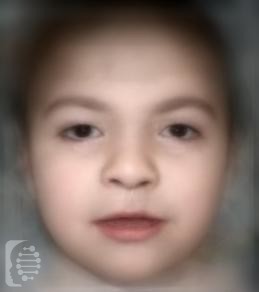What is Craniofacial Dysmorphism, Skeletal Anomalies, and Mental Retardation syndrome (CFSMR)?
Craniofacial Dysmorphism, Skeletal Anomalies, and Mental Retardation syndrome is a genetic condition characterized by abnormal development of the brain, face and torso.
The syndrome is characterized by severe intellectual disability, limited to zero speech development, and behavioral issues.
Syndrome Synonyms:
Cerebro-facio-thoracic dysplasia; Cerebrofaciothoracic Dysplasia
What gene change causes Craniofacial Dysmorphism, Skeletal Anomalies, and Mental Retardation syndrome (CFSMR)?
Mutations in the TMCO1 and RAB5IF genes are responsible for the syndrome. It is inherited in an autosomal recessive pattern in both genes.
Autosomal recessive inheritance means an affected individual receives one copy of a mutated gene from each of their parents, giving them two copies of a mutated gene. Parents, who carry only one copy of the gene mutation will not generally show any symptoms but have a 25% chance of passing the copies of the gene mutations onto each of their children.
What are the main symptoms of Craniofacial Dysmorphism Skeletal Anomalies, and Mental Retardation syndrome (CFSMR)?
The main symptoms of this syndrome include severe intellectual disability and delayed speech and motor skills. ¼ of individuals with the syndrome will never learn to speak, while ½ of all affected individuals will never walk.
Rib and spinal abnormalities are common with the syndrome- including fused ribs, fused vertebrae, and scoliosis (curvature of the spine).
Facial and physical features of the syndrome include a wide, short skull, arched eyebrows that meet in the middle, widely spaced eyes, a wide nasal bridge, low-set ears, an upper lip with obvious curves, small teeth, a cleft palate or lip, small teeth and an overgrowth of the gums.
In infancy, individuals with the syndrome may experience hypotonia (low muscle tone) and issues with feeding.
Behavioral issues with the syndrome are also common: these might include anxiety, autism spectrum disorder, and self-injurious behavior.
Possible clinical traits/features:
Cerebral cortical atrophy, Polyhydramnios, Cleft palate, Abnormality of the philtrum, Abnormality of the ribs, Aplasia/Hypoplasia of the corpus callosum, Aplasia/Hypoplasia of the cerebellum, Anxiety, Abnormality of calvarial morphology, Abnormality of the kidney, Brachycephaly, Wide nose, Bifid ribs, Attention deficit hyperactivity disorder, Atrial septal defect, Talipes equinovarus, Wide intermamillary distance, Ptosis, Upslanted palpebral fissure, Synophrys, Sparse and thin eyebrow, Thick eyebrow, Scoliosis, Supernumerary nipple, Macrocephaly, Microcephaly, Strabismus, Flat face, Bull’s eye maculopathy, Vertebral segmentation defect, Autosomal recessive inheritance, Wide mouth, Shawl scrotum, Short neck, Overlapping toe, Pes planus, Patent ductus arteriosus, Postaxial hand polydactyly, Poliosis, Sparse eyelashes, Self-mutilation, Rib fusion, Sacral dimple, Hypoplasia of the corpus callosum, Highly arched eyebrow, High palate, Hernia, Hemivertebrae, Short stature, Hypoplasia of the maxilla, Cognitive impairment.
How is it diagnosed?
To find out if someone has a diagnosis of Craniofacial Dysmorphism, Skeletal Anomalies, and Mental Retardation syndrome (CFSMR), it is important to have a consultation and evaluation with a clinical genetic specialist. Specialists may also suggest specific genetic testing or other types of tests to help reach a diagnosis. FDNA’s AI technology can help speed up the diagnostic process by analyzing facial features and other health information.

